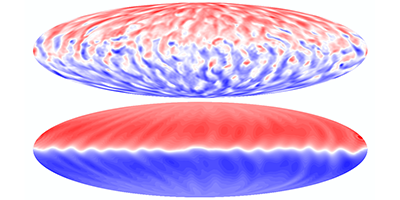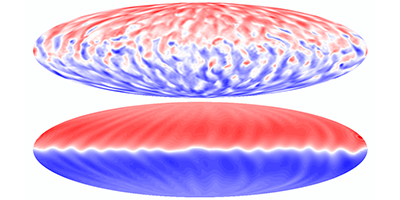Quakes in Neutron Stars
Neutron stars have the strongest magnetic fields of all stars in the Universe, but little is known about the exact field geometry. Observed sudden jumps in the star’s rotation and gamma-ray flares suggest that the field distribution is more complex than the asymmetric dipole generally assumed. Now, Toby Wood from Newcastle University and Rainer Hollerbach from University of Leeds, both in the UK, have performed 3D simulations to determine how the magnetic field within the star crust develops after the star’s birth.
The magnetic field of a neutron star arises from electric currents flowing within its crust and core. Assuming a spherically symmetric crust, the authors simulated these currents taking into account how they are affected by magnetic forces. The simulations show that the strength of the magnetic field at the equator is an order of magnitude larger than that at the poles, and that the field at the bottom of the crust is stronger than that at the surface.
The results suggest that, at the birth of the star, the structure of the field contains evenly distributed small fluctuations. Over time these fluctuations grow to form structures that then migrate towards the equator, resulting in a high-field ring around the star, while the field elsewhere gets more homogeneous. The high-field ring exerts shear stresses on the charged particles within the crust. Such stresses are sufficient to cause starquakes (fractures of the crust), which originate at the surface and penetrate downwards. The authors found that the concentrated equatorial fields persist over very long time frames, resulting in star quakes up to hundreds of thousands of years after the star is born.
This research is published in Physical Review Letters.
–Katherine Wright





